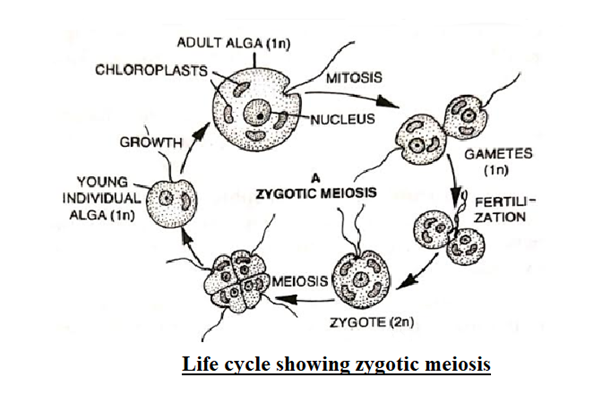Explain diagramatically the life cycle of protists.
Living organisms are classified into kingdoms based on the common anatomical and physiological features they share. classification is a rank-based system of classification in which the highest rank has been given to the kingdom. other ranks are class, order, genus and species. Phylogenetically kingdom Protista acts as a connecting link between the prokaryotic kingdom Monera, complex multicellular kingdom fungi, plantae and animalia. They are regarded as ancestors of all multicellular eukaryotic organisms.
Life cycle: it represents the development changes occurring in a series of events during the life of an organism.
In protists, there are two types of life cycle found.
- Life cycle showing zygotic meiosis: in this the adult alga is haploid and it forms diploid zygote. The zygote, which is diploid, divides through reductional division i.e, meiosis to produce haploid vegetative cell. This meiosis is termed as zygotic meiosis through which zygote is divided to reduce the ploidy by half. The haploid vegetative cell then divide mitotically to produce daughter cells that are also haploid as parent cell. Some of these vegetative cells upon maturation combine to form zygote through fertilization. Formation of zygote signifies the completion of the life cycle and it again repeats in the same way for maintaining continuity of life. This type of life cycle can be seen in some dinoflagellates such as Ceratium, Gymnodinium, etc and cellular slime moulds.

Trending now
This is a popular solution!
Step by step
Solved in 3 steps with 2 images









